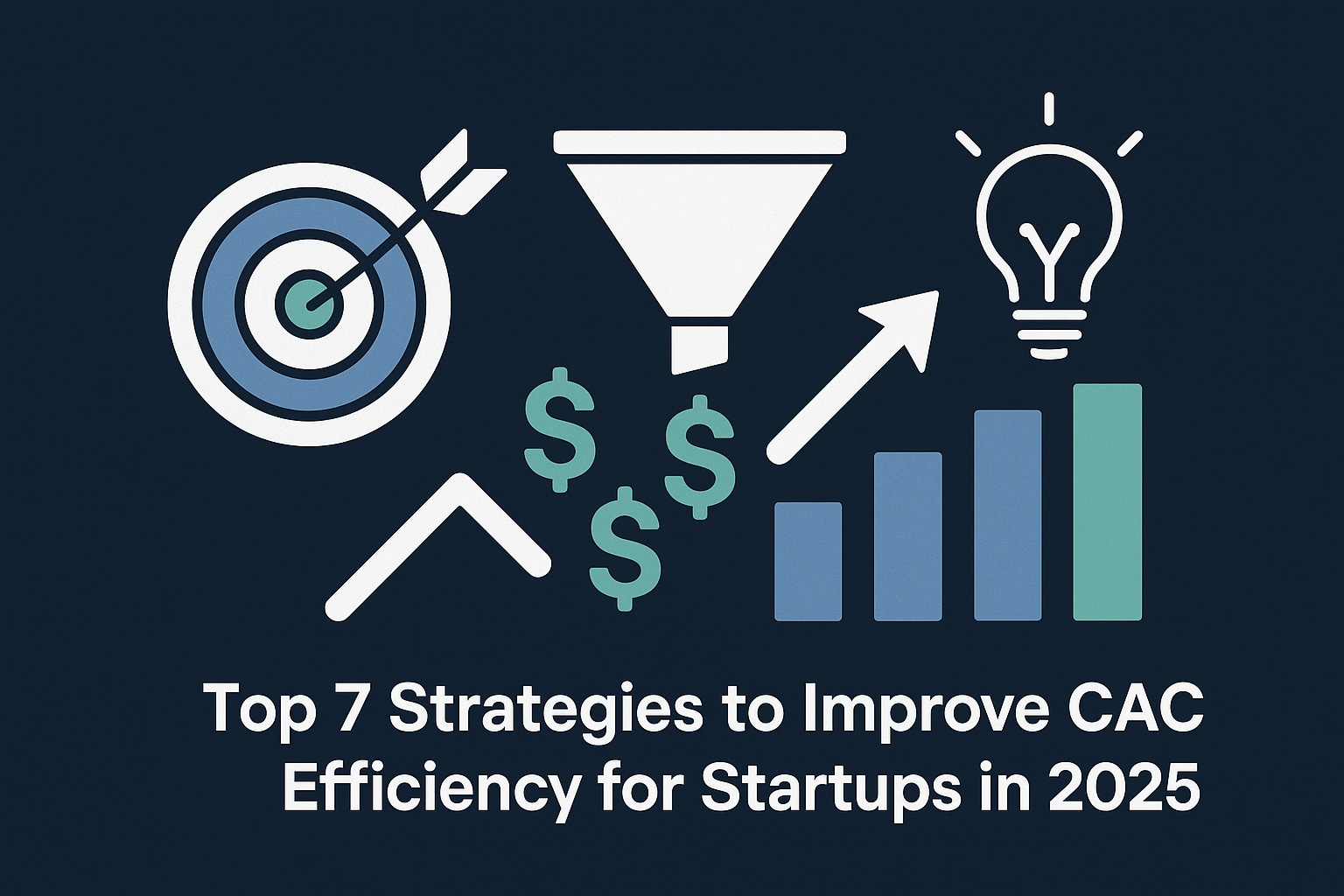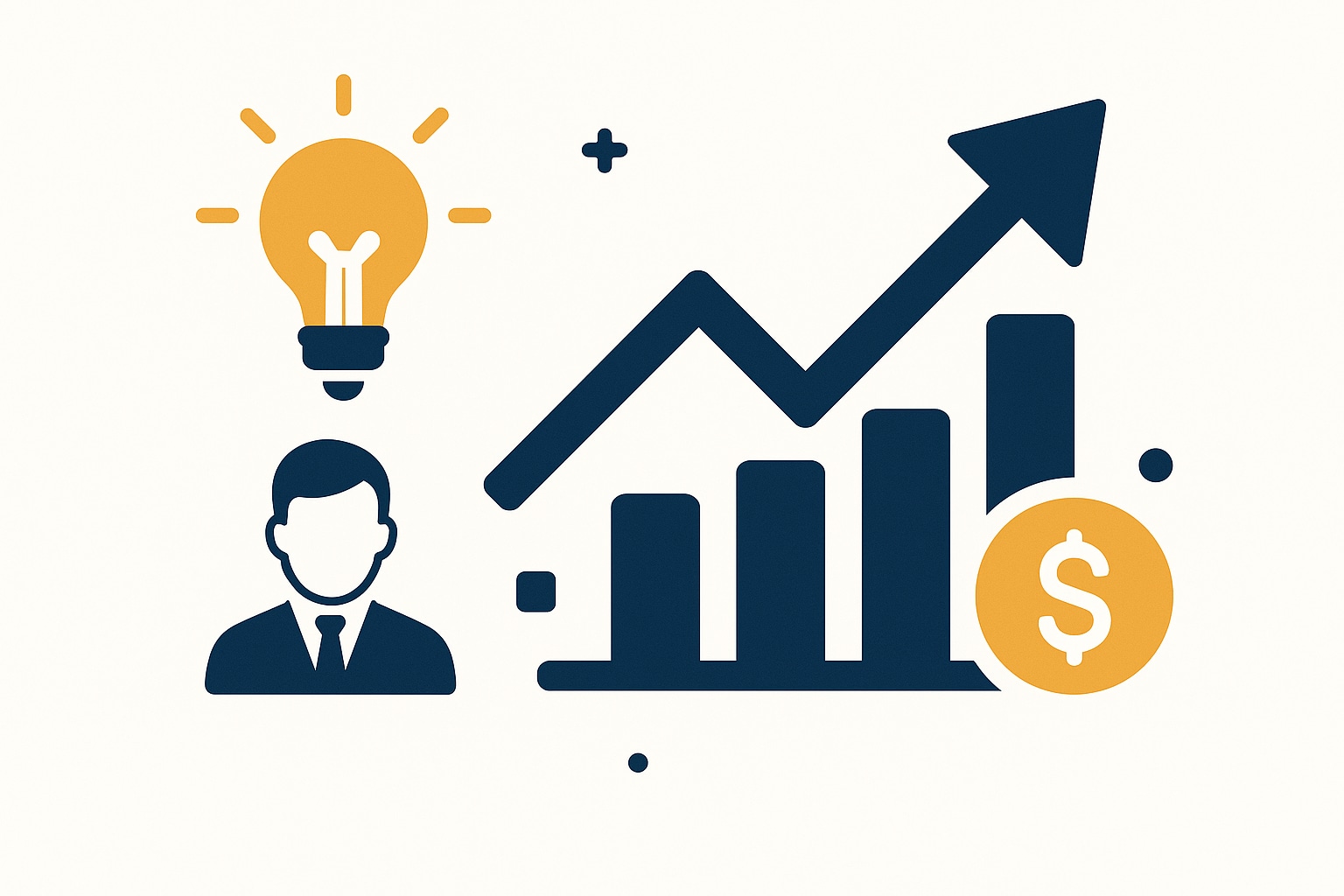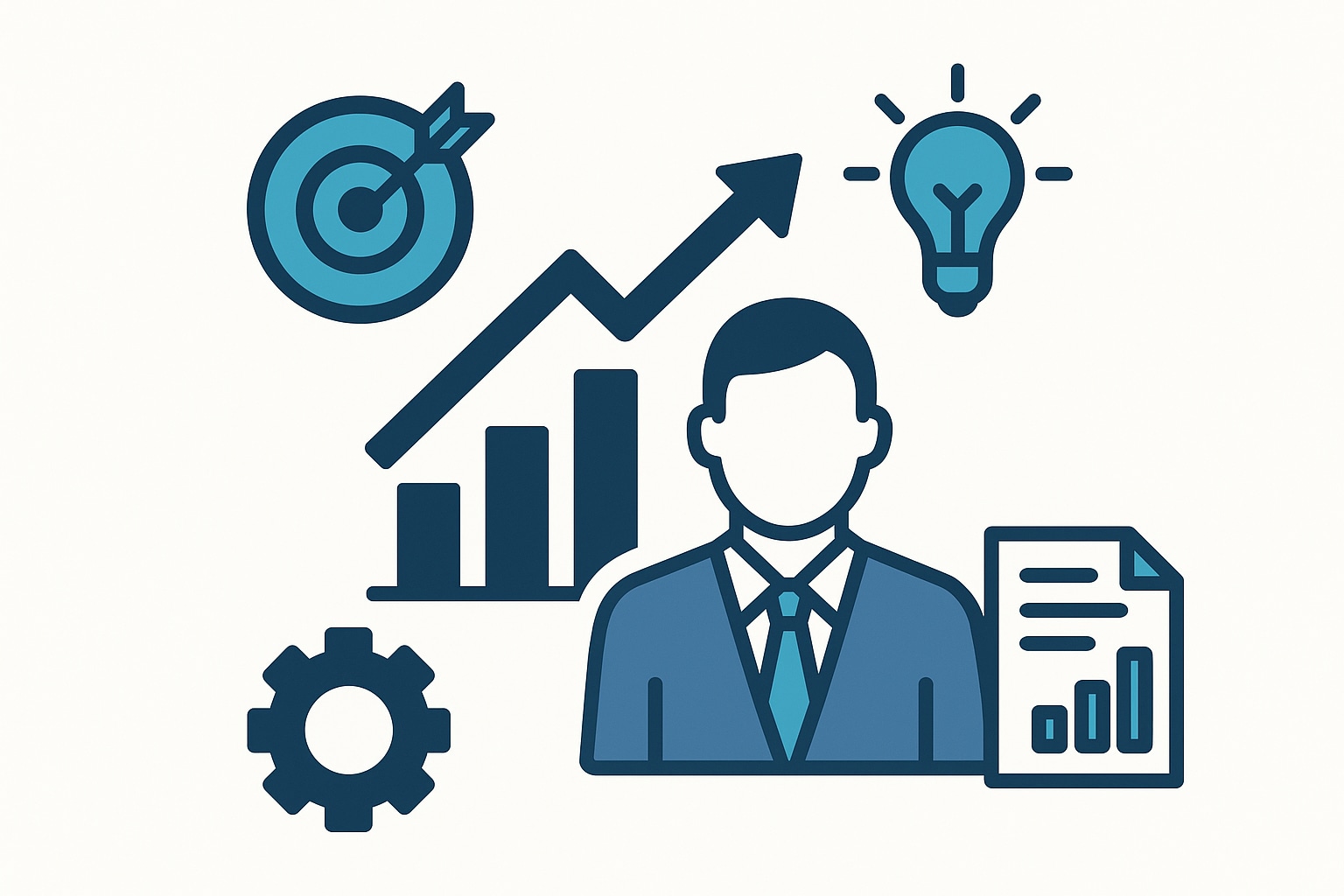Top 7 Strategies to Improve CAC Efficiency for Startups in 2025

Startup founders face an ever-evolving digital landscape, where the ability to acquire customers efficiently can determine the difference between scaling up and stalling out. As the costs of customer acquisition climb and competition intensifies, understanding and improving your CAC (Customer Acquisition Cost) efficiency isn’t just good practice—it’s a necessity for survival and growth. At Curio Revelio, we’ve seen firsthand how strategic planning, data-driven execution, and relentless optimization can transform a startup’s trajectory. In this guide, we’ll break down actionable strategies and proven tactics to help you optimize your CAC efficiency, ensuring every dollar spent fuels sustainable growth and positions your company for long-term success.
What is CAC Efficiency?
CAC efficiency, or customer acquisition cost efficiency, refers to how effectively a startup converts marketing and sales spend into new, high-value customers. It is measured by analyzing the ratio of the cost to acquire a new customer versus the value that customer brings over time. Startups must strive to minimize CAC while maximizing customer lifetime value (LTV), as this balance is critical to healthy unit economics and scalable growth.
In today’s environment, CAC is under intense scrutiny. According to recent industry data, "Customer acquisition costs have increased by 222% over the past eight years." For SaaS companies specifically, "The average customer acquisition cost (CAC) for SaaS companies is approximately $702." However, some sources also cite that "The average customer acquisition cost (CAC) for SaaS is $205." Variance in CAC highlights the impact of industry, target segment, and marketing maturity—but the trend is clear: efficient customer acquisition is getting harder, not easier.
Top 7 Strategies to Improve CAC Efficiency
Improving CAC efficiency demands a holistic approach that encompasses both marketing strategy and execution. The following seven strategies are designed for startup founders looking to build a robust, scalable growth engine that keeps acquisition costs in check while fueling sustained revenue growth.
Strategy 1: Optimize Channel Mix
The first step in improving CAC efficiency is to ensure your marketing budget is allocated across the channels that deliver the highest ROI. Many startups make the mistake of spreading resources too thinly or sticking with legacy channels that no longer perform. Invest in rigorous attribution analysis to identify where your most cost-effective conversions are coming from, and double down on those channels. Experiment with emerging platforms and formats, but always measure impact against cost. Diversifying your channel mix not only reduces reliance on any single source but also uncovers new opportunities for scalable growth.
Strategy 2: Leverage Content & SEO
Organic acquisition remains one of the most effective ways to drive down CAC over time. By investing in high-quality content and robust SEO strategies, startups can attract qualified leads without the recurring costs associated with paid advertising. Content marketing builds trust, authority, and visibility in your niche, while SEO ensures that your solutions appear when prospects are actively searching. Over time, a well-executed content and SEO program compounds, reducing your average CAC and supporting sustained growth even if paid budgets fluctuate.
Strategy 3: Personalize Customer Journeys
Generic marketing no longer cuts it—personalization is now a growth imperative. By leveraging data to tailor messaging, offers, and experiences to individual customer segments, startups can significantly improve conversion rates and reduce wasted spend. "Personalized marketing campaigns drive a 26% higher conversion rate for SaaS companies." Use tools such as behavioral segmentation, dynamic content, and triggered communications to ensure each prospect’s journey feels unique and relevant, driving more efficient acquisition at every stage of the funnel.
Strategy 4: Shorten Sales Cycle & Onboarding
The faster you can move prospects from discovery to activation, the lower your effective CAC. Streamlining your sales process—through automation, clear calls-to-action, and removing friction points—reduces drop-off and accelerates conversions. Similarly, optimizing your onboarding process minimizes the time (and cost) required to turn new sign-ups into active, paying customers. Map out your current funnel, identify bottlenecks, and implement iterative improvements to shrink the path to value, improving both CAC efficiency and customer satisfaction.
Strategy 5: Harness AI & Automation
Modern marketing technology is a key lever for improving CAC efficiency. AI and automation can supercharge everything from lead scoring to campaign optimization, allowing teams to scale efforts without scaling headcount. "AI adoption can reduce CAC by up to 50%." Whether it’s automating repetitive outreach, leveraging predictive analytics to prioritize high-intent leads, or dynamically adjusting ad spend in real time, startups that embrace AI-driven solutions stand to dramatically cut acquisition costs and boost results.
Strategy 6: Enhance Customer Support & Self-Service
Acquisition doesn’t end at sign-up—a seamless support experience can be the difference between a one-time user and a loyal customer. By investing in proactive customer support and robust self-service resources, startups can reduce both churn and support costs. FAQs, knowledge bases, and chatbots empower users to find answers quickly, while human support should be available for complex queries. This not only improves retention but also enhances word-of-mouth and increases the lifetime value of each customer, making every acquisition dollar go further.
Strategy 7: Focus on Retention & Referrals
Retaining customers and turning them into advocates amplifies CAC efficiency. Satisfied customers are more likely to renew, upgrade, and refer others—reducing the marginal cost of each new acquisition. "Referral programs can increase SaaS customer acquisition by 30%." Implement structured referral incentives, nurture ongoing engagement, and routinely solicit feedback to ensure your product continues to delight. A strong retention and referral engine doesn’t just lower CAC, it creates a compounding growth loop that underpins sustainable scale.
How to Measure and Track CAC Improvements
Accurately tracking CAC and its efficiency improvements is foundational to optimizing your marketing investments. Begin by defining a consistent CAC formula—total sales and marketing spend divided by the number of new customers acquired over a set period. To gain deeper insights, segment CAC by acquisition channel, customer cohort, or campaign type. Track supporting metrics such as conversion rate, LTV, and payback period to contextualize CAC trends.
Benchmark performance regularly against industry standards. For instance, "The average SaaS company conversion rate is 7%." Consistent monitoring and reporting empower your team to pivot quickly, double down on what works, and sunset underperforming tactics. Data-driven decision-making ensures that every dollar spent is accountable and aligned with long-term business goals.
Case Studies & Real-World Examples
Consider a B2B SaaS startup that engaged Curio Revelio to overhaul its channel mix and content strategy. By reallocating budget from underperforming paid campaigns to high-intent SEO and targeted LinkedIn outreach, the company reduced its blended CAC by 37% over six months, while increasing qualified pipeline volume by 42%.
In another example, a consumer app leveraged AI-powered lead scoring and marketing automation to prioritize top prospects and personalize outreach. As a result, the startup saw its acquisition costs drop by nearly 50%, consistent with the industry finding that "AI adoption can reduce CAC by up to 50%."
One SaaS platform introduced a formal referral program and saw new sign-ups increase by 28% month-over-month, closely mirroring the industry benchmark that "Referral programs can increase SaaS customer acquisition by 30%." These case studies underscore the real-world impact of a deliberate, data-driven approach to CAC efficiency.
For more examples and tailored support, visit https://www.curiorevelio.com.
Actionable Checklist for Startup Founders
- Audit your current channel mix: Identify top-performing acquisition sources and reallocate budget for maximum ROI.
- Invest in content and SEO: Develop a content calendar and implement SEO best practices to drive organic growth.
- Implement personalization: Use customer data to tailor messaging, offers, and journeys across all touchpoints.
- Streamline sales and onboarding: Map the customer journey, remove friction points, and automate repetitive tasks.
- Adopt AI and automation tools: Leverage technology to scale campaigns, optimize targeting, and improve efficiency.
- Enhance support and self-service: Build out knowledge bases and empower customers to solve issues independently.
- Launch or refine referral programs: Incentivize word-of-mouth and track referral-driven acquisitions.
- Measure and benchmark regularly: Track CAC, conversion rates, and LTV by channel and cohort, and compare to industry benchmarks.
Conclusion & Call to Action
Achieving CAC efficiency is an ongoing journey that requires strategic vision, operational discipline, and constant optimization. By implementing these seven strategies, startup founders can take control of their acquisition costs, outpace competitors, and set the foundation for sustainable growth in 2025 and beyond. If you’re ready to transform your marketing outcomes and need expert guidance or execution support, the team at Curio Revelio is here to help—get in touch today to accelerate your growth trajectory.
Read More
TCS's Growth and Transformation: A Comprehensive Analysis
Explore TCS's strategic growth and transformation initiatives, including revenue milestones, AI integration, and workforce evolution, shaping the future of IT services.

Understanding Growth Marketing: Strategies for Startup Success
Explore the fundamentals of growth marketing and discover strategies to drive startup success through data-driven decision-making and innovative tactics.

Understanding the Role of a Growth Marketer: Key Responsibilities and Impact
Explore the key responsibilities and impact of growth marketers, focusing on data-driven strategies for customer acquisition and retention.
Schedule a Call Today
Discuss your Growth challenges

